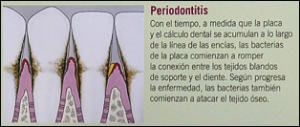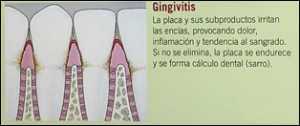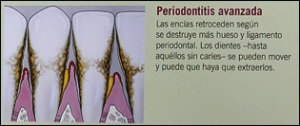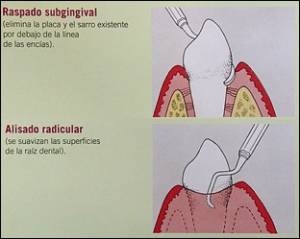Unfortunately, GINGIVITIS is a very common disease in our society. More than 85% of the Spanish population over 35 years old has some type of gum problem. Among the risk factors that cause periodontal disease, the most common are smoking, stress, hormonal changes, previous cases in the family, herpes, people who have had transplants, diabetes, ostheoporosis, HIV. A patient who is a diabetic or a smoker triplicates the risk of suffering from periodontitis.
Although many people get used to living with this situation, it is unpleasant and does not help to preserve teeth in the future. Gum bleedingappears when brushing teeth, spontaneously when eating or at night, staining the pillow. This is due to an inflammation and ulceration of the gumcaused by the accumulation of bacterial plaque around it, which produces an open wound that bleeds when it rubs against something.
There exists the false idea that gum bleeding is normal. This is completely erroneous. Gums must not bleed, as fingers, eyes or any other parts of our organism do not bleed. The gum must be well stuck to the teeth and isolate the bone from the outside. If it bleeds during a long period of time, it means that there is communication between the inside and the outside, which implies contamination and destruction of the bone that serves as dental anchorage, and this can cause tooth loss due to mobility: PERIODONTITIS. Periodontitis, together with caries, is the most common disease in the world.
Among the risk factors that can cause periodontal disease the most common are smoking, stress, hormonal changes, previous cases in the family, herpes, people who have had transplants, diabetes, ostheoporosis, HIV. A patient who is a diabetic or a smoker triplicates the risk of suffering from periodontitis.
It is important to note that patients who smoke often suffer from important gingivitis and periodontitis problems without suffering gum bleeding.
Normal, healthy gum
Healthy gums, the periodontal ligament and the bone anchor teeth firmly in place.
Periodontitis
Over time, as plaque and dental tartar accumulate along the gumline, plaque bacteria start breaking the connection between the soft anchorage tissues and the tooth. As the disease progresses, bacteria also attack the bone tissue.
Gingivitis
Plaque and its subproducts irritate the gums causing pain, inflammation and bleeding. If it is not eliminated, plaque hardens and dental tartar appears.
Advanced Periodontitis
Gums retreat as more bone and periodontal ligament is destroyed. Teeth –even those with no caries– can move so that they might have to be extracted.
The treatment has different stages:
Treatment to reduce inflammation:
Pockets of bacteria and tartar attached to the walls of the dental roots are eliminated through what is called “scaling and root planing”, done with local anaesthetic, so it is not at all discomforting. This way, we get the inflammed gum attached to the teeth again. Normally, several visits are necessary within 2 to 4 weeks, together with hygiene instructions that the patient must incorporate to his/her routine.
Periodontal surgery treatment:
In cases where the disease is more advanced, including moderate or advanced loss of bone, it is necessary to carry out surgical manipulation of the gum and the bone in order to correct internal defects caused by the disease. When needed, bone regeneration techniques can be applied to recover a part of the lost bone.
It is preventive, to avoid reinfection of the tissues around the tooth.
It consists of regular examinations and periodical professional cleanings every 4 to 6 months to eliminate the bacterial plaque acumulated between teeth and gums, together with correct daily hygiene at home. It has been proven that people who are constant in this maintenance programme will significantly extend the life of their teeth.








